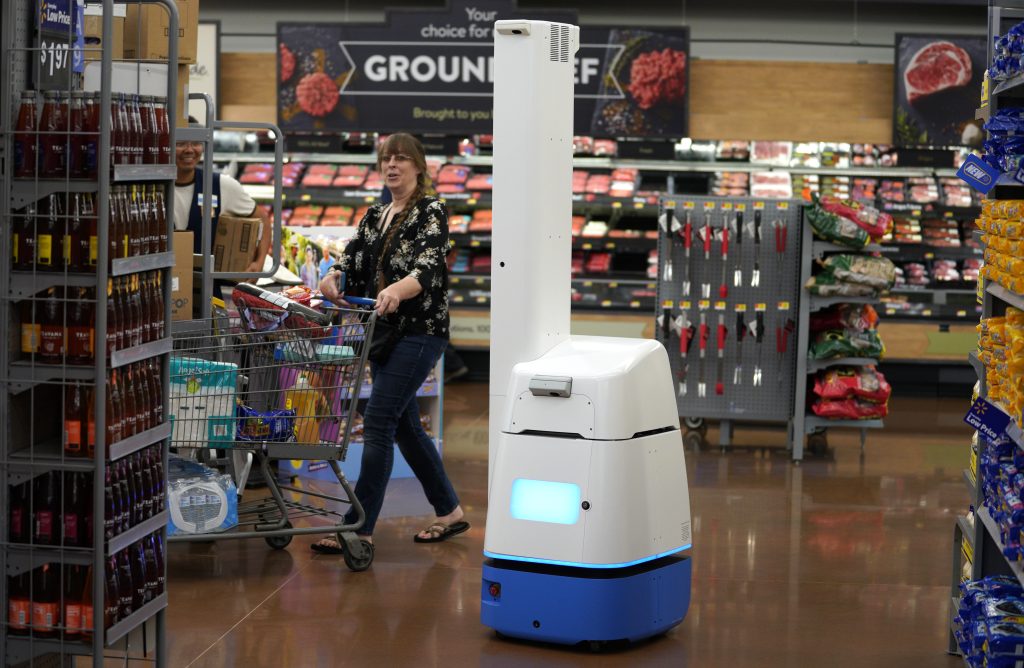Walmart, one of the world’s leading retail giants, has recently announced an ambitious goal – to have 65% of its stores utilize automation by 2026.
This strategy represents a significant evolution in the company’s operational model and underscores the retail industry’s broader push toward embracing technology to enhance efficiency, customer experience, and profitability.
Automation, in the context of retail, refers to the use of technologies such as robotics, artificial intelligence (AI), and machine learning to perform tasks traditionally done by humans. It could involve everything from stocking shelves and sorting inventory to processing payments and providing customer service.
Walmart’s decision to increase its reliance on automation is rooted in a number of strategic objectives. First and foremost, automation can significantly increase operational efficiency. Automated systems can work continuously without breaks, reducing the time needed for tasks like restocking and inventory management. This is particularly important in a large-scale operation like Walmart, where small efficiency gains can translate into substantial savings.
Moreover, automation can improve accuracy in several retail tasks. For instance, automated inventory systems can reduce errors that occur in manual counting and tracking. This leads to better inventory management, reducing overstocking or understocking issues, and therefore, minimizing waste and improving profitability.
The use of automation also aligns with Walmart’s push towards an omnichannel retail strategy. By integrating online and offline operations, the company aims to provide a seamless shopping experience for its customers. Automation technologies, such as self-checkout kiosks and AI-powered customer service, can enhance this integration by providing consistent, round-the-clock service.
However, Walmart’s move toward automation is not without its challenges. The most notable concern is the potential impact on jobs. While the company has stated that the introduction of automation will not lead to job cuts, but rather a shift in the nature of jobs, there is still apprehension among the workforce. Therefore, a key part of Walmart’s automation strategy will involve retraining and upskilling its employees to operate and manage these new technologies.
There are also logistical challenges to overcome. Implementing automation on a large scale requires significant investment in infrastructure, equipment, and software. Ensuring that these systems can integrate smoothly with existing operations is a complex task that will require careful planning and execution.
Yet, despite these challenges, Walmart’s decision to embrace automation reflects a broader trend in the retail industry. As technology continues to evolve and consumer expectations rise, retailers are increasingly looking to automation as a way to stay competitive. By improving efficiency, reducing errors, and enhancing customer experience, automation offers significant potential benefits.
Moreover, the COVID-19 pandemic has accelerated this trend. With social distancing measures in place and a surge in online shopping, retailers have had to adapt quickly to a new operating environment. Automation technologies have played a crucial role in this adaptation, allowing retailers to maintain operations while ensuring the safety of their customers and employees.
Looking ahead, it’s clear that automation will play a key role in the future of retail. While the transition will present challenges, the potential benefits are significant. Walmart’s ambitious goal to automate 65% of its stores by 2026 represents a significant step forward in this journey. By embracing automation, the company is positioning itself to remain competitive in an increasingly digital and automated retail landscape.
In conclusion, Walmart’s drive towards automating a substantial proportion of its stores is a bold move, signaling the company’s commitment to innovation, efficiency, and the omnichannel shopping experience. This move, while challenging, is necessary in a rapidly evolving retail landscape where technology and consumer expectations are continually shifting. If successfully executed, Walmart’s automation strategy could not only revolutionize its own operations but also set a precedent for the future of the retail industry.
As Walmart navigates this ambitious goal, there will likely be a considerable learning curve. The process will involve not only the technical challenge of implementing and integrating new technologies but also the human challenge of ensuring that employees are properly trained and prepared for these changes.
However, Walmart’s commitment to retraining and upskilling its workforce in response to automation is a positive sign. This proactive approach can help ensure a smooth transition and mitigate potential job displacement, thus addressing one of the major concerns related to automation.
It’s also important to note that while automation can streamline processes and improve efficiency, it should be complemented by a human touch. Technology can perform many tasks, but it can’t replicate the human connection that is often critical to the customer experience. Therefore, striking a balance between automation and human interaction will be crucial in this new era of retail.
Innovation and adaptation have always been at the heart of the retail industry, and Walmart’s automation plan is a testament to this. In setting this target, Walmart is not only looking to improve its operations but also to lead the way in the industry’s transformation.
This journey is about more than just Walmart. It’s about how the retail industry at large responds to the changing technological landscape. If Walmart can successfully achieve its goal of 65% automation by 2026, it could serve as a blueprint for other retailers looking to navigate the complex path of digital transformation.
Indeed, the retail industry is at a crossroads, and Walmart’s bold plan encapsulates the essence of this transformative period. As the company embarks on this ambitious journey, the whole industry will be watching. The lessons learned, successes celebrated, and challenges encountered will likely shape the retail industry’s path for years to come.
In the end, Walmart’s automation strategy could be a game-changer, not only for the company itself but for the wider retail sector. As such, the move represents much more than a corporate strategy; it is a glimpse into the future of retail, where technology and human ingenuity combine to create a seamless, efficient, and customer-centric shopping experience.







